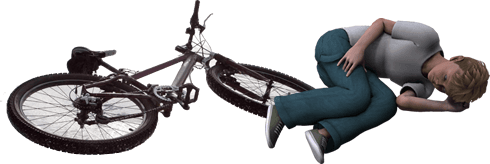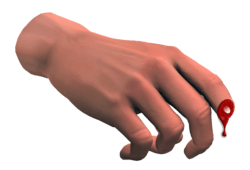Progress
Online First Aid Class | Severe Trauma
Severe Trauma, Amputation, Internal Bleeding
Penetrating and Puncturing Injuries
Penetrating and puncturing injuries require special care. When a sharp object, such as a knife or a nail, has penetrated the body or punctured the skin, you don’t treat it as if it’s a normal bleeding injury.
When trying to help someone with a penetrating or puncturing injury, you should take the precautions you normally would.
- ● Make sure the scene is safe
- ● Call 9-1-1
- ● Put on your PPE
- ● When providing aid, try to stop any visible bleeding
If the object is still stuck inside their body, do NOT remove it. Leave that to a professional healthcare provider. You doing so may cause more bleeding and damage.
Internal Bleeding
Internal bleeding, or bleeding inside the body, isn’t always obvious. You might be able to see a bruise under the skin, or you might not see any signs at all. You also won’t be able to determine just how much bleeding has occurred.
You should suspect internal bleeding if a person:
- ● Has been injured in a car crash, hit by a car, or has fallen from a great height
- ● Has sustained an injury to the chest or abdomen, including bruises
- ● Has sustained a sports-related injury, such as being hit with a ball or colliding with another person
- ● Has abdominal pain or chest pain after an injury
- ● Is short of breath after an injury
- ● Is vomiting or coughing up blood after an injury
- ● Shows signs of shock, but not external bleeding
- ● Has a knife or gunshot wound
If you suspect internal bleeding:
- ● Make sure the scene is safe
- ● Call 9-1-1
- ● Get the first aid kit and AED
- ● Put on PPE
- ● Have the person lie down, and ask them to keep still
- ● Check for signs of shock
- ● Give CPR if you need to

Instructor: Mike Figuero
Publish Date: 2022-04-02
Last Updated: 2022-07-18
